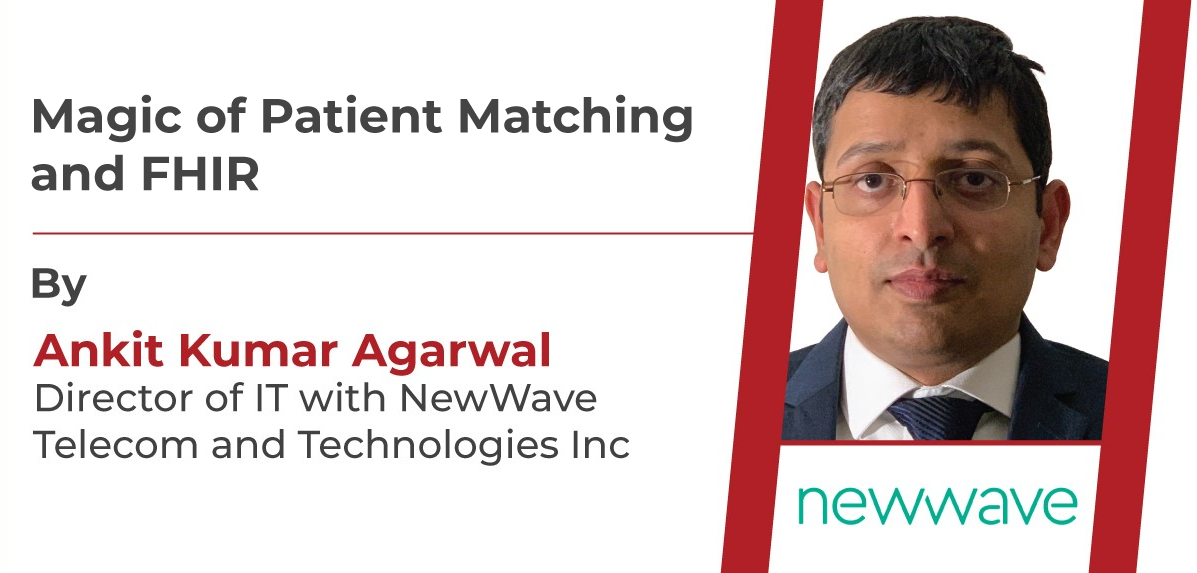
Ankit Kumar Agarwal
Ankit Kumar agarwal is a Wharton Graduate and working as “Director of IT” with NewWave Telecom and Technologies Inc. Ankit is passionate about bringing impactful changes in people’s life and writes blogs to educate people and promote digital Health.
What is Patient Matching
Patient matching refers to the process of accurately identifying a patient across different healthcare systems and settings. It is a critical aspect of interoperability, as it enables the sharing of patient information between different systems, allowing for more efficient and effective care delivery.
The process of patient matching involves comparing patient data from different systems to determine if it is the same person. This typically includes comparing demographic information such as name, date of birth, and address, as well as other data such as medical record numbers and biometric data.
Challenges Associated with Patient Matching
There are a number of challenges associated with patient matching, including the lack of standardization in patient data across different systems, and the presence of errors or inaccuracies in patient data. These challenges can make it difficult to accurately match patients across different systems.
To address these challenges, various patient matching algorithms and technologies have been developed, including:
- Probabilistic algorithms: which use statistical methods to determine the likelihood that two records are for the same person. It uses a combination of demographic information such as name, date of birth, and address, as well as other data such as medical record numbers and biometric data, to calculate a match score.
- Deterministic algorithms: which use exact matching criteria to determine if two records are for the same person.
- Rule-based matching: This type of algorithm uses a set of predefined rules to determine if two patient records are for the same person. The rules may include demographic information, such as name, date of birth, and address, as well as other data such as medical record numbers and biometric data.
- Phonetic matching: This type of algorithm uses phonetic encoding to match patients by the way their names sound, rather than the way they are spelled. This can be useful for handling variations in name spelling, such as Nick and Nicholas.
- Fingerprint/Facial recognition: This type of algorithm uses biometric data, such as fingerprints or facial recognition, to match patients. This technology is particularly useful in environments where unique patient identification is critical, such as hospital setting.
- Hybrid algorithms: which use a combination of probabilistic and deterministic methods to match patients.
Patient matching is a complex and ongoing process, and it requires a combination of technology and human review to ensure accuracy. It’s also important to note that patient matching is not a one-time process, it requires ongoing maintenance and monitoring to ensure that patient records stay accurate and up-to-date.
How FHIR can help solve the Patient Matching Problem
The Fast Healthcare Interoperability Resources (FHIR) standard can be used to help solve the patient matching problem by providing a common framework for the exchange of patient information between different healthcare systems. FHIR defines a set of standard data elements and data structures that can be used to represent patient information, making it easier to compare patient data from different systems and match patients across different systems.
One of the key ways that FHIR can be used to solve the patient matching problem is through the use of the Patient resource. This resource contains a set of standard data elements that can be used to represent patient information, including demographic information such as name, date of birth, and address, as well as other data such as medical record numbers and biometric data. By using the same data elements and data structures to represent patient information, FHIR makes it easier to compare patient data from different systems and match patients across different systems.
Additionally, the use of FHIR also facilitates the use of patient matching algorithms by providing a common set of data elements and data structures that can be used by the algorithm, regardless of the system from which the data was obtained.
FHIR also defines a set of standard APIs for accessing patient data, which can be used to create patient access APIs, that allows patients to access their health information using the FHIR standard. This can be used to support patient engagement and give patients access to their health information in a more user-friendly way.
In summary, FHIR can be used to solve the patient matching problem by providing a common framework for the exchange of patient information, which makes it easier to compare patient data from different systems and match patients across different systems, and by providing a set of standard APIs for accessing patient data, which can be used to create patient access APIs, that allows patients to access their health information using the FHIR standard.
*This article is Peer Reviewed by the Distilinfo Editorial team prior to the publication.*


